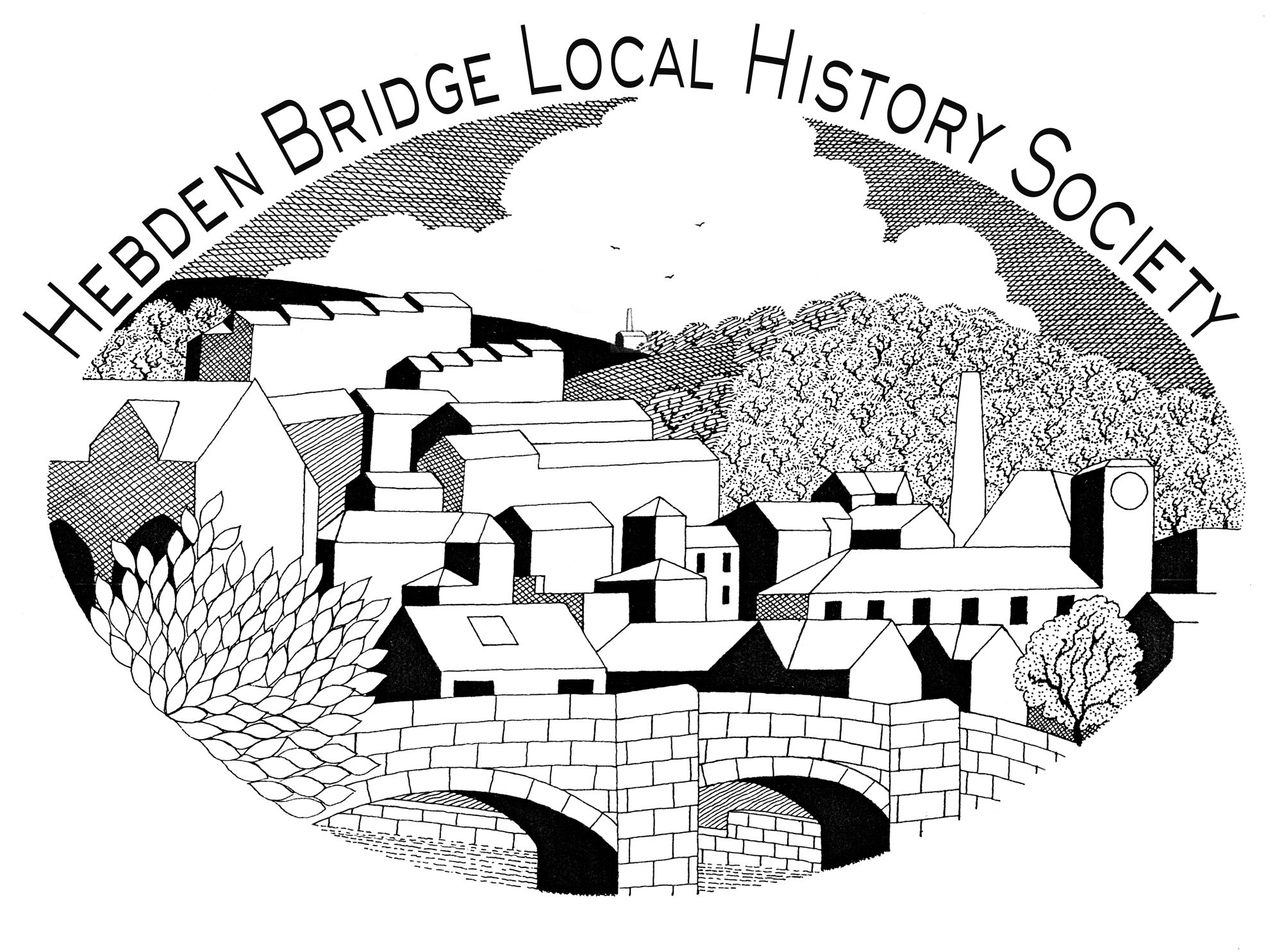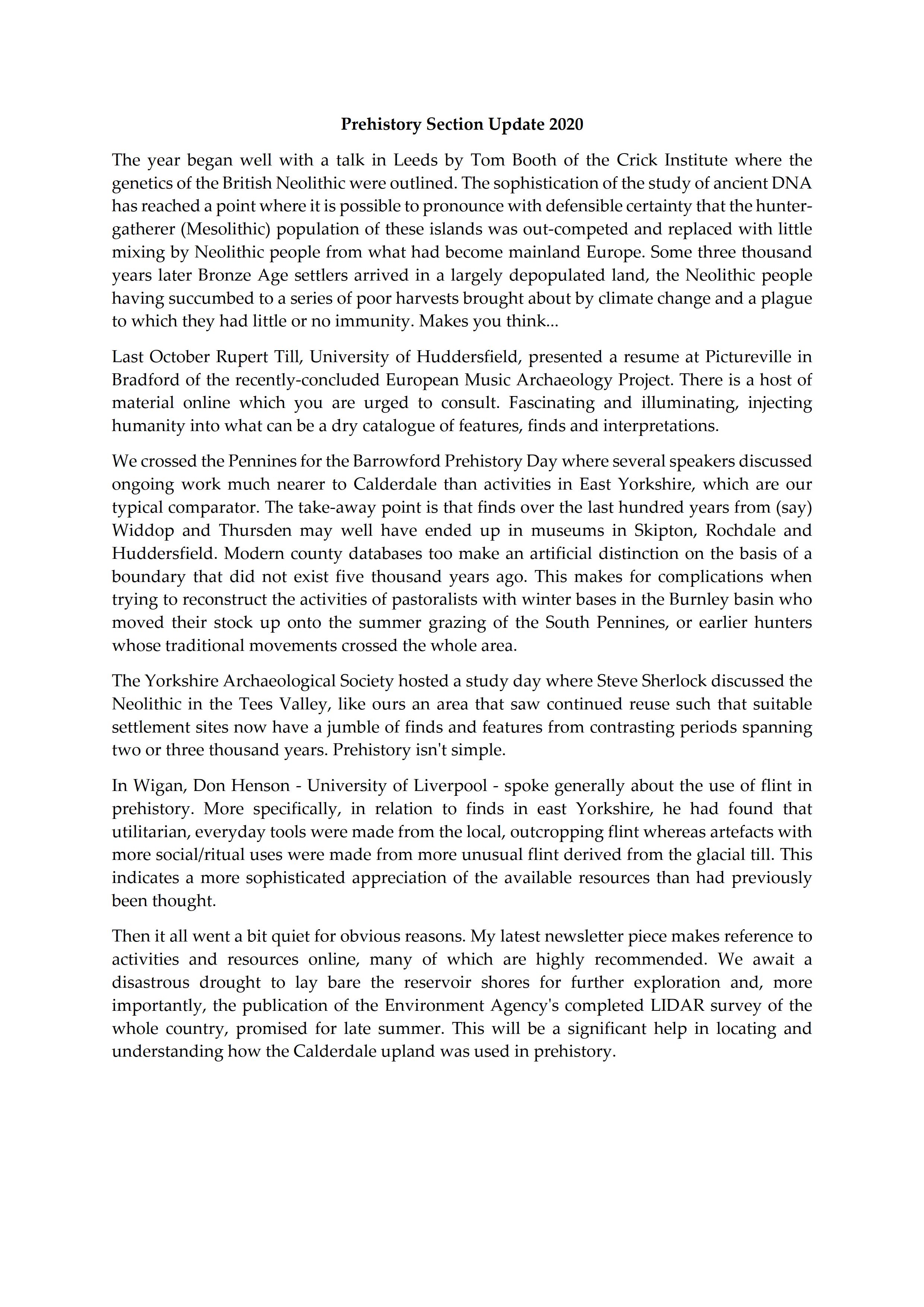For some years now a small group of friends has been exploring the evidence for prehistoric activity in the South Pennines, roughly from the M62 up to the Stanbury-Colne road and from the main Pennine watershed in the west across to the urban fringe in the east. There is no particular prehistoric or archaeological significance in these boundaries, this is simply the present extent of our fieldwork.
The images below illustrate some of the features we have examined. Below the images are articles and updates that provide summaries of our work over the years.
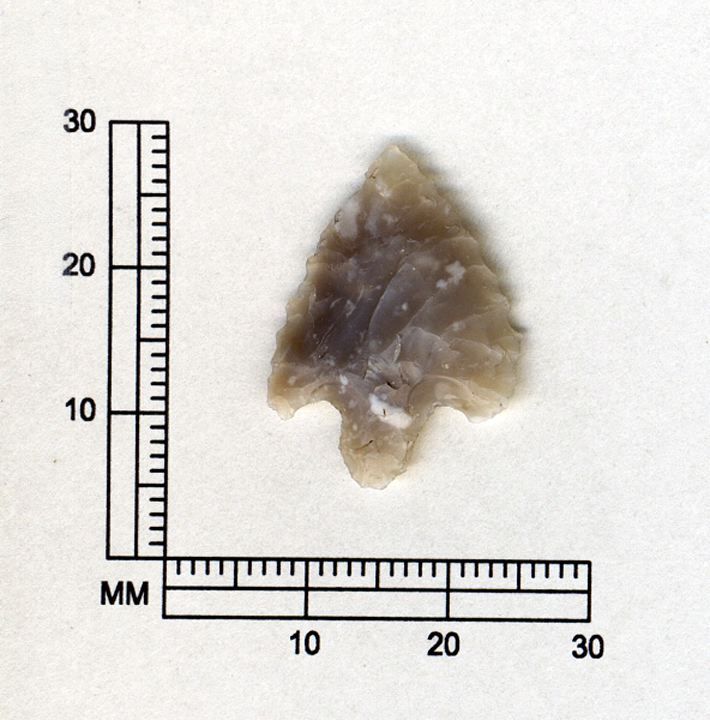
Arrowhead: a typical barbed and tanged arrow-tip from the early bronze age. It would have been fixed to the shaft using wool twine and birch bark glue. This one seems to be made from grey Wolds flint – flint does not occur naturally in the South Pennines and was traded across country. These arrowheads are often found damaged from use. This undamaged one, from Midgley Moor, may be a hunting loss or a ritual deposition.
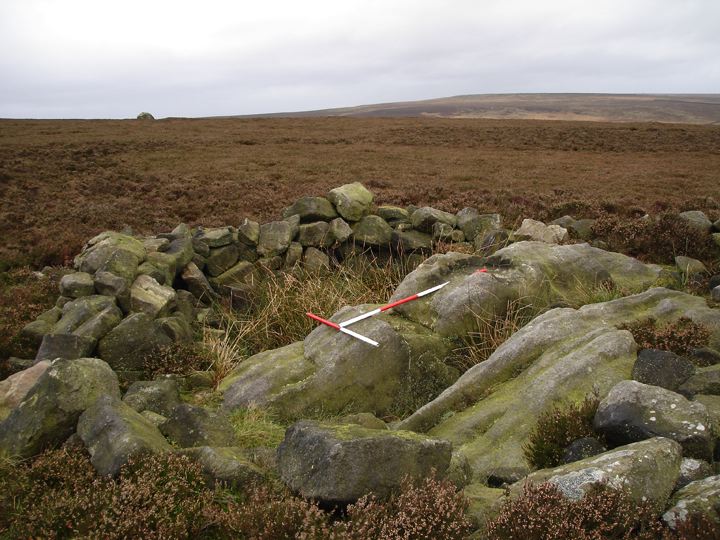
Miller's Grave: a singular feature. The name is modern but the thing itself is prehistoric. The central element, either two slabs of rock close together or one that has split, has been surrounded and concealed from view by a substantial bank of earth and stones. Robin Hood’s Penny Stone – another modern name for a much older feature – can be seen on the skyline.
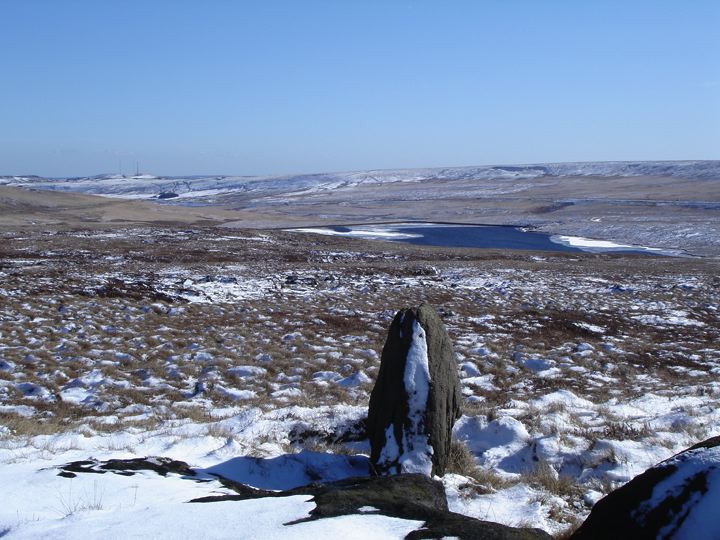
Letterstones: Prominent stone overlooking Green Withens valley and oriented toward where the sun rises in November and again in February marking the pre-Christian festivals of Samain and Imbolc (which were later adopted and adapted as All Souls and Candlemas), essentially straddling winter and denoting the end of the harvest season and the coming of spring.
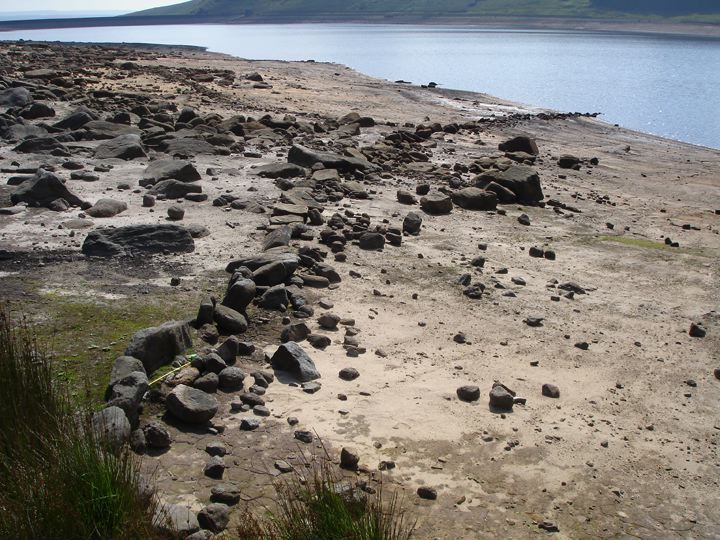
Linear feature, Widdop: a curious wall of erect slabs curving down the valley side edging a one-time re-entrant. The reservoir water here, as elsewhere, has stripped off the peat and soil to leave the prehistoric land surface exposed. Where erosion has continued the slabs have fallen over. This linear feature may have been a ritual boundary or the basis for a stock-proof barrier to keep animals away from the stream people were using.
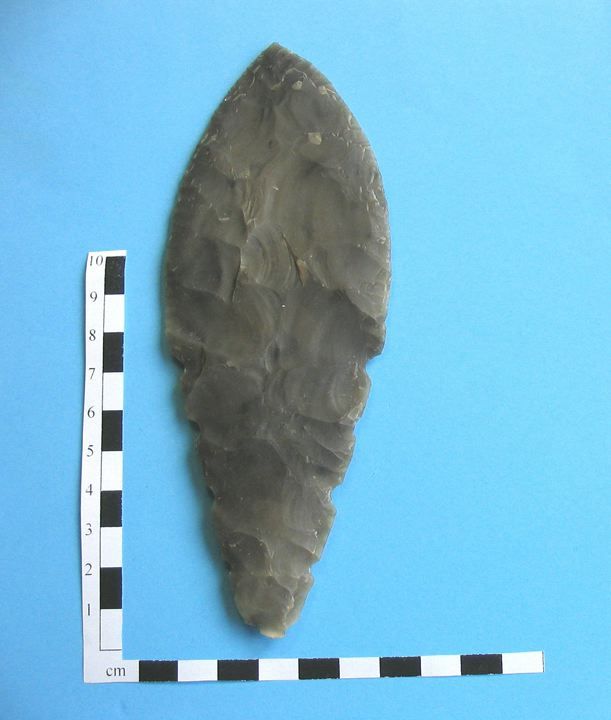
The Gorple Dagger: a high status, prestige item which would have been worn for show. The flint dagger is a copy of early bronze forms and would have had a handle of decorated bone, horn or wood. This is one of the best examples in the country and is similar to north European forms. It was found adjacent to a washed-out burial on the shore of Upper Gorple Reservoir. The acid soils of the South Pennine uplands have destroyed many traces of prehistoric people; bone, wood, leather, horn, textile and ceramic are very unlikely to survive.
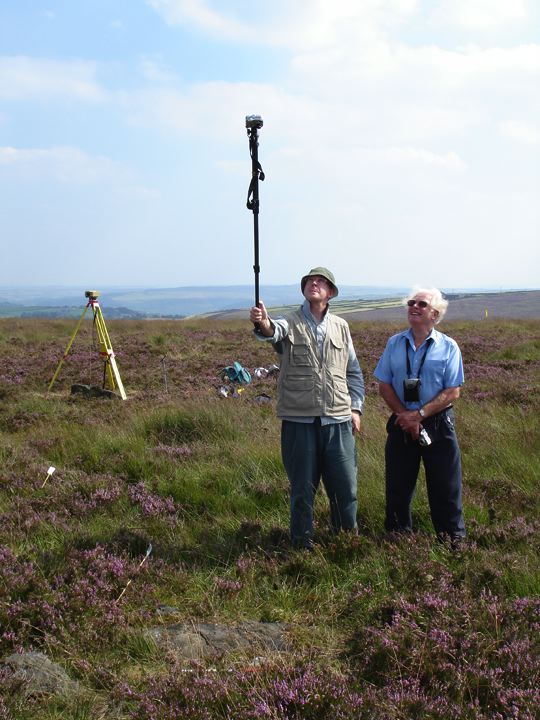
Recording rock art: a camera-on-a-stick is being used to take a vertical photo (as an alternative to making a scale drawing in the field)
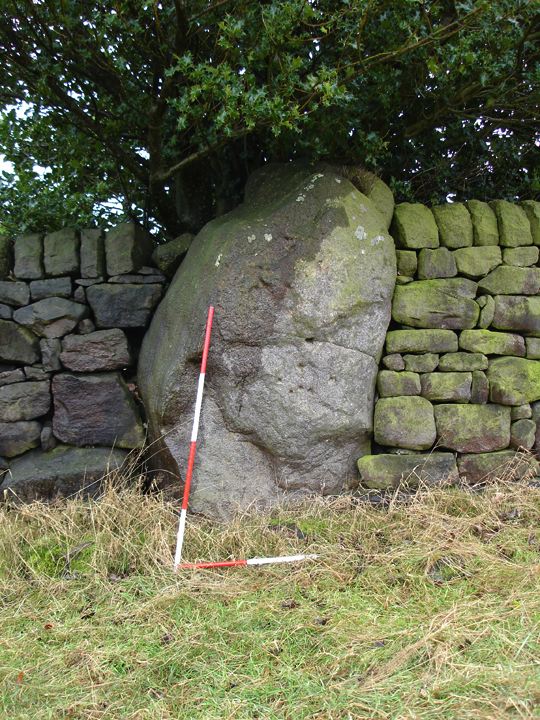
Standing stone, Heptonstall: sited just above the break of slope, and now incorporated into a wall, this stone may well have a stellar reference. There are several stones that appear to point to a position on the horizon too far south of east for the sun or moon. In fact they all indicate a place where the constellation Capricornus rose in 1500BC.
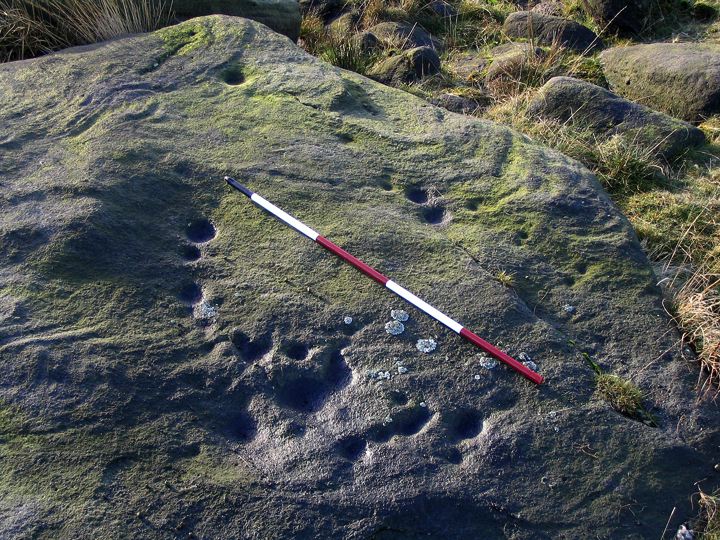
Cupmarks, Higher Moor: just south of Stoodley Pike. The cup-marks - the circular depressions – are a common form of prehistoric rock art. These cups seem to have been placed in a particular configuration.
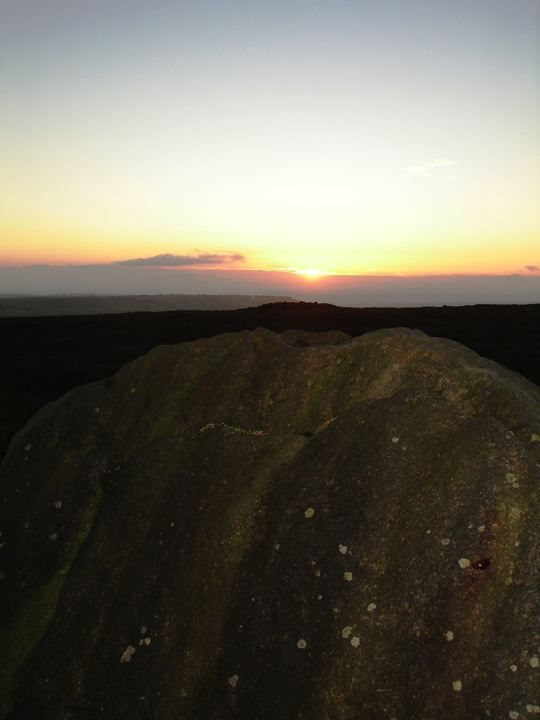
Midwinter sunrise: From Robin Hood’s Penny Stone the midwinter sun appears to rise out of the Miller’s Grave. This kind of alignment to significant solar and lunar events is quite common in prehistoric features and is unlikely to have occurred by chance here.
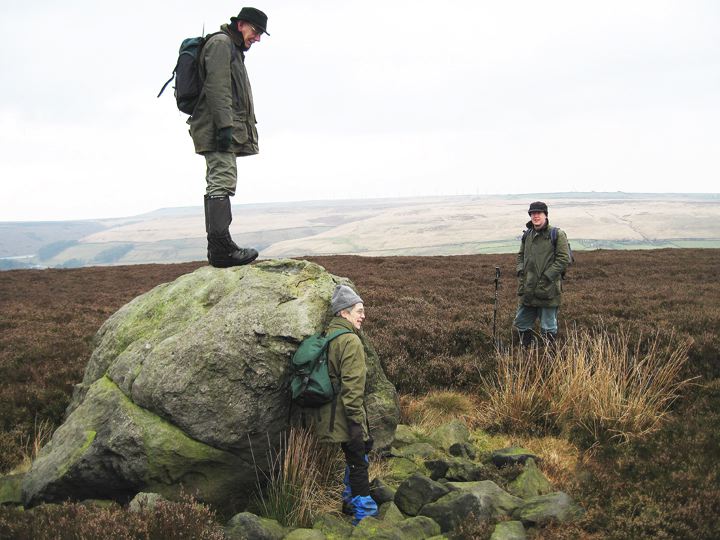
Robin Hood's Penny Stone: a large block of a gritstone called Huddersfield White Rock. HWR outcrops further down the moor and this stone may have been moved some 300m to its present position
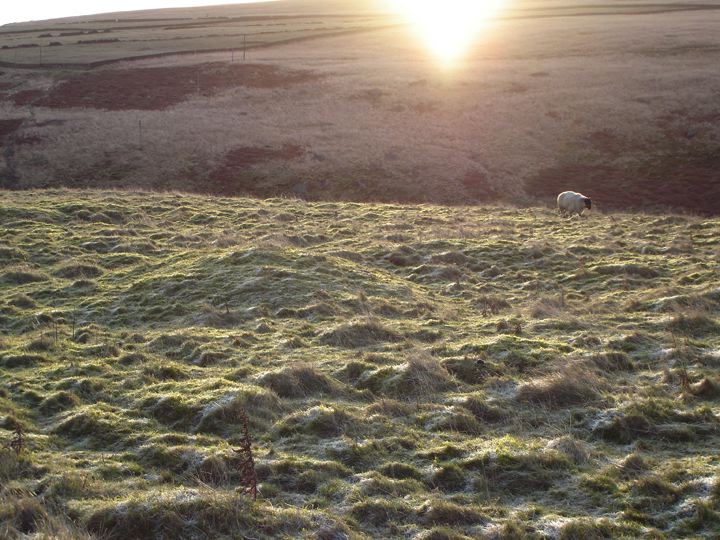
Barrow, Ridge: a turf-covered mound of stones with a ditch around it. Another form of prehistoric burial.
